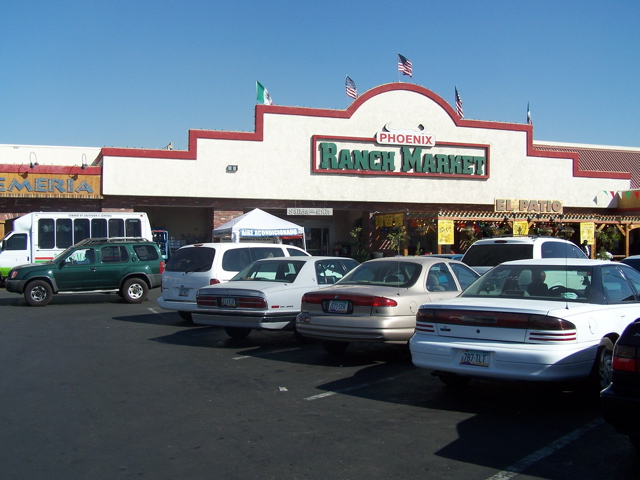|
|
||||
|
Open Letter for South Phoenix
Dear Residents of the Greater Phoenix Metro Area, My name is Tom Haas and I am a Junior at ASU West Campus. I have recently finished an Urban Studies/Anthropology course entitled Learning from South Phoenix. This particular course is eight weeks long and is held in South Phoenix, so the class can do individual research projects on the cultural and ethnic makeup of the community and witness first hand the vast social and economic changes that are transforming the community from a mostly minority inhabited, impoverished area to that of newly built housing and commercial developments. To draw on various experiences in the community, we usually visited one site each class period. It could vary from a non-profit training center for low income families, such as that of Unlimited Potential, or taking part in building a house at South Ranch, one of the largest Habitat for Humanity communities in the nation. At each location, we learned how each organization operates to help those less fortunate. I learned that both of them acquire donations from prominent companies in the Valley such as educational institutions, government agencies, various charities and volunteer groups. Many of them, such as Habitat for Humanity, require future residents to fulfill 400 hours of so-called “sweat equity” work. This means that these individuals have to work not only on completing their own home, but help build that of their neighbors as well. This is looked at as a source of strengthening the community through a cooperative team effort shown through other cherished beliefs like respect, appreciation, optimism and above all having fun. Each one of these organizations is a driving force of change in the form of advocating educational opportunity and through establishing safe, well-maintained neighborhoods for people whose dreams of owning a home have finally come true. Besides learning about different ways to help the needy in South Phoenix, I also gained insight into the cultural traits and ways of the Latino population in the area. Through two guest speakers, one a PhD candidate in Industrial Design and another a well known mural artist, I became knowledgeable in the lengthy history and traditions of Low-rider cars and mural paintings. Each holds important meaning as Latino expression, identity, pride, status and power. The Low-rider in particular remains a family tradition and a showcase for many artistic and technological innovations, while the murals are also used as a form of artistic expression, but are a tool in projecting political statements about issues that have an impact on the well-being of the South Phoenix community. Another memorable experience was an interview conducted by myself and some of my fellow classmates with a group of South Mountain School students. We went into the interview wanting to get a more “young” oriented perspective on issues ranging from safety and their thoughts on the changes occurring in their community, but came out of it with new views on cultural identity, their changing neighborhood as well as their dreams and aspirations of the future. We found that many felt safe in the area and would move back after college to live and raise a family. They all said that they obviously disliked how the new developments displaced older residents and converted the older well-known areas of town into upscale golf resorts, condos and houses, but stated that they were quite nice and wished they could one day move into them. The major point I got from this interview was that no matter where you live or what socio-economic background you come from, we all have the same goal of a happy, successful life. In conclusion, by taking Learning from South Phoenix, it revealed to me problems and concerns of a whole new part of town that I really didn’t know much about or even paid attention to prior to taking this course. I found the discussions and guest speakers fascinating and learned a great deal about urban culture, as well as Latino traditions as in Low-rider cars and mural paintings. The school interview and the community service work at Habitat for Humanity strengthened what I learned in these discussions. I gained more insight into not only the opinions of the residents on some key issues concerning the community, such as poverty, urban growth and safety, but, more importantly, through hands on experience in building a house, I became aware of the various ways in which any valley resident can donate their time and goodwill to have a positive impact on someone else’s life and make a difference in South Phoenix. Sincerely, Tom Haas ASU student |
|||
|
||||

